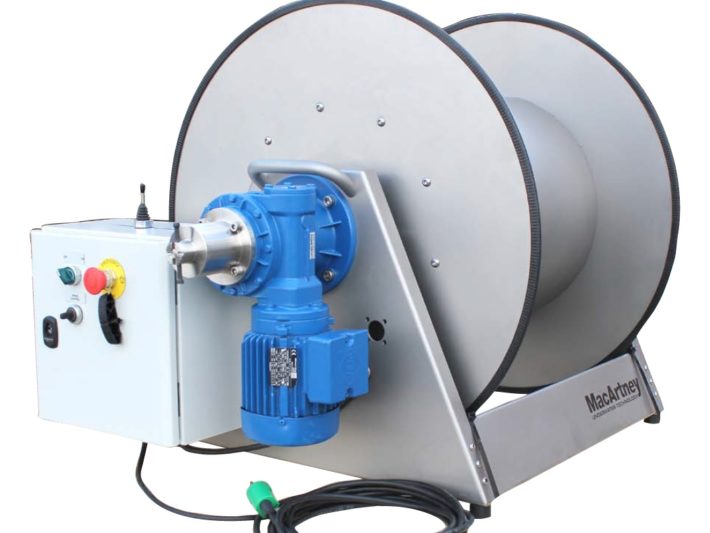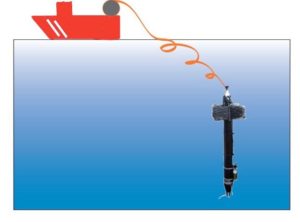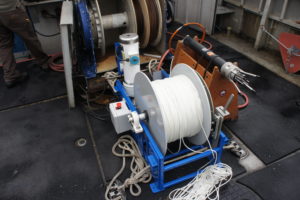Winches Optimized for Turbulence Profilers
When choosing a winch for your turbulence profiler it is important to consider the deployment characteristics of turbulence profilers. Unlike a CTD Rosette, turbulence profilers descend in what is known as tethered free-fall. Tethered free-falling is when a profiler is allowed to fall uninterrupted and decoupled from the vessel and/or ocean surface motions. To achieve this, the tether must be coiled on the surface of the water by hand so that the profiler can take up the slack as it falls.
While there are many options available, it is important to find a winch that works well for your turbulence profiler. Some important considerations include the following:
Free wheeling is an important capability of winches optimized for turbulence profilers. Free wheeling is enabled by the addition of clutch that can be disengaged. Free wheeling the winch allows for a single operator to pull line or cable off the winch. For shorter profiles it may be practical to mark the line at the depth desired, take that much line off the winch and form a coil on the deck before deploying the profiler. For longer profiles it is best to work with a partner; one person pulling line off the winch in free wheel mode and the other casting the line into the water.
Recovery of turbulence profilers is the most important function of a winch. In many cases it is impractical to recover the profiler by hand. Recovery by winch can speed up the process allowing for more profiles to be taken during a cruise. When using a real time instrument please remember to use a sheave that accommodates the bend radius of the telemetry cable. Automatic level winders are also a useful feature. If an automatic level winder is not included a boat hook can be used to guide the cable/line back onto the winch.
Real Time and Internally Recording Turbulence Profilers have different winch requirements. Real time profilers require a telemetry cable as well as a slip-ring to allow data to be transferred from the cable on the rotating winch drum to a deck cable and finally to a computer. Winches for internally recording profilers do not require a slip-ring and generally require a lower pull strength because they do not need to lift the heavy cable. Winches optimized for internally recording profilers are often smaller such as the PID-02 which can be lifted easily by two people and secured to the deck of smaller vessels.
Rockland Scientific partners with A.G.O. Environmental to provide a wide range of winches. A.G.O.’s team recently joined the Rockland crew for a field trip as part of the VicTOR 2016 training week. You can read more about the field trip here: A.G.O. Field Trip with Rockland Scientific





